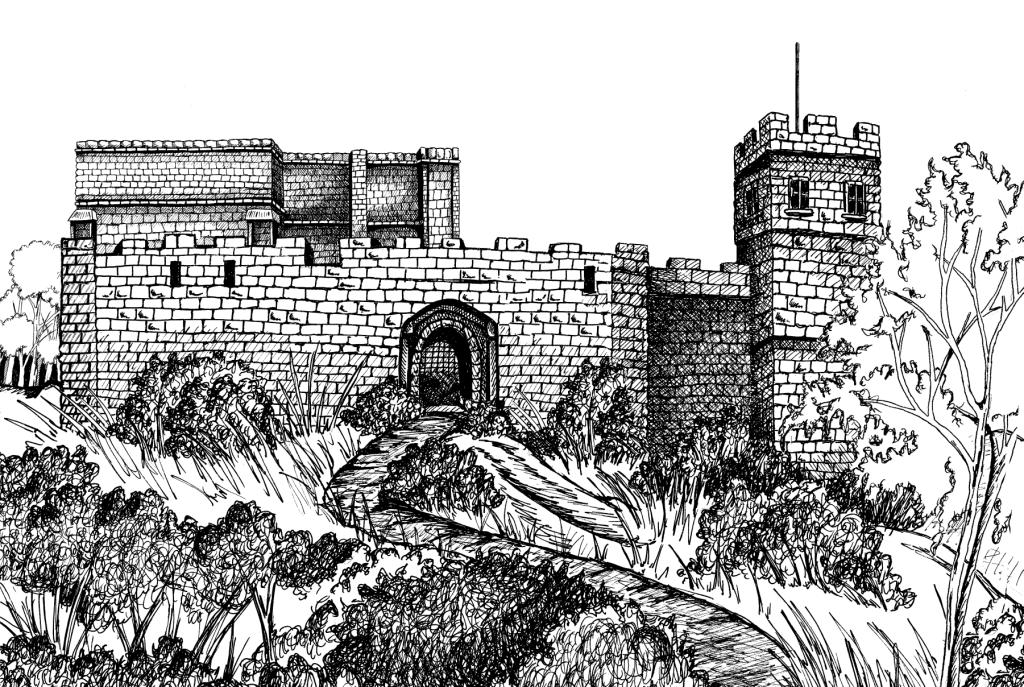Last time, I talked a little bit about the how I set my design goals for Shadowed Keep on the Borderlands before I started any actual design. Today, I’m going to share how I started to flesh out the basic details of the place.

The first thing to think of was exactly how big an adventure I wanted. After some thought, I settled on having four distinctive zones within the ruins. To me, four zones enables a decent amount of variety without having to make design concessions or come up with an increasingly bizarre backstory to justify everything within the ruins.
Each zone had to have its own flavour otherwise the ruins would be boring (and therefore not very fun to design, prepare or play). So before I started proper design, I decided on the absolute basic theme for each area. Now obviously Shadowed Keep on the Borderlands was a homage to the Moathouse from The Temple of Elemental Evil and so some of the choices were very obvious. Others, were driven by game design requirements to allow certain classes or races to shine.
After some thought, each zone’s basic “headline” shook out like this:
- Zone 1: Watchtower claimed by bandits. As an organised force, the bandits compete with the goblins for control over the ruins. Heavily fortified but with several ways in (for clever PCs).
- Zone 2: Ruins inhabited by animals and vermin; the easiest of the zones. Access to a hidden sub-zone (the keep’s treasure vault) the PCs will probably only find if they use their wits and diplomatic skills.
- Zone 3: Underground dungeon level claimed by goblins and their allies. The goblins compete with the bandits for control of the ruins and are aided by several different types of allies; waves of identical goblins are very, very boring. Potential for further adventures.
- Zone 4: Underground ruined dungeon level populated by undead and constructs. Potential for further adventures.
Additionally, it became clear to me the module should not dictate to the players in what order they should tackle the ruins. As a player I loathe railroading with the fiery passion of a thousand burning suns and I saw no need to inflict it on anyone playing this module. The players should be able to make meaningful choices about their exploration from almost the first moment of the adventure. There should also be multiple ways of accessing some of the levels and the layout of the place should reward clever play. (For example, a secret entrance to the goblins’ lair that they don’t know about – and don’t guard).
The adventure should also support further adventures so the GM can customise and add to it as he sees fit. I also knew I wanted to follow the old adage that the deeper you go the more dangerous it gets. It’s one of the dungeon design concepts that’s so universal that everyone understands it instinctively. So, the further away from ground level the PCs get (either up the watchtower or into the dungeons), the harder things get.
Finally, and this is a biggie, I wanted to build in ample opportunity for role-playing in the Shadowed Keep. It would be very easy to simply design a dungeon bash in which the PCs hack their way through increasingly dangerous opponents. While there’s nothing wrong with that style of play, I felt it important to add in many opportunities for the PCs to get around problems using their guile and charm.
So at this point, it was time to work out how to fit all these different themes into the keep’s background. I’m a big fan of adventures having their own logical consistency. Why are the goblins there? Who built the keep? Why? These and lots more questions had to be answered and so I set about writing the adventure background. I’ll talk about that next time!
This article is part of Dungeon Design Fortnight. Dungeon Design Fortnight celebrates Raging Swan Press’s upcoming release of GM’s Miscellany Dungeon Dressing – a huge 336-page tome dedicated to all aspects of dungeon design and dressing. I’m insanely proud of GM’s Miscellany Dungeon Dressing and I hope if you are thinking about designing dungeons you check it out.
3 thoughts on “Shadowed Keep on the Borderlands Zoning Case Study”